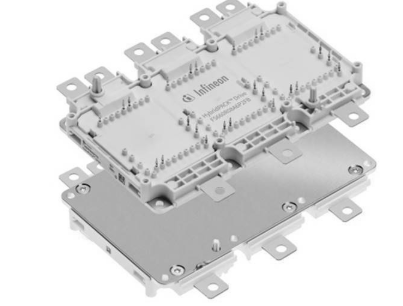Infineon Announces Power Modules for xEV Main Inverters Creates a Cost-Effective Electric Vehicle Portfolio
Recently, Infineon Technologies AG (FSE code: IFX / OTCQX code: IFNNY) released power modules for xEV main inverters to support the automotive industry to create a wide range of high Cost-effective hybrid electric vehicle and pure electric vehicle (xEV) product portfolio. At this year's PCIM trade show, Infineon exhibited four new HybridPACKTM drive modules optimized for different inverter performance levels from 100 kW to 200 kW. In addition, the HybridPACK double-sided cooling (DSC) S2 from Infineon is an upgraded version of the existing HybridPACK DSC. This module targets the main inverters in hybrid electric vehicles and externally-charged hybrid vehicles that require high power density, with performance up to 80 kW.
HybridPACK drive - delivers flexible scalability in the same size
All new HybridPACK drive modules are designed in the same form factor as the prestigious lead product in the family of products (FS820R08A6P2x). Thanks to this, system developers can quickly and flexibly expand inverter performance without drastically changing the system design.

Caption: The HybridPACKTM Drive Flat module is optimized for cost-effective operation for 100 kW inverters
As a low-performance product in this family, the new HybridPACK Drive Flat modules (FS660R08A6P2Fx) and Wave modules (FS770R08A6P2x) are optimized for cost-effective applications for 100 kW to 150 kW inverters. Their substrates are connected to the inverter heatsink, but their heat dissipation performance varies depending on the substrate structure. The Flat module does not use a mature PinFin substrate that achieves the highest heat dissipation performance, but uses a flat substrate that has no structure at all. This can reduce costs but lower output power. The Wave module uses a ribbon bond wire substrate structure to compensate for the performance gap between the flat panel model and the PinFin substrate model.
This article is from Allicdata Electronics Limited.